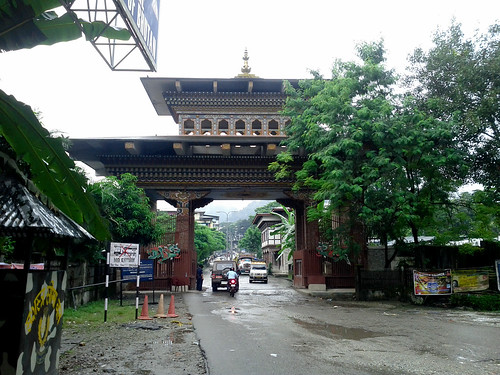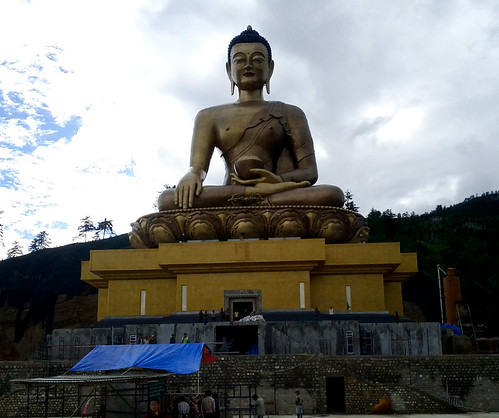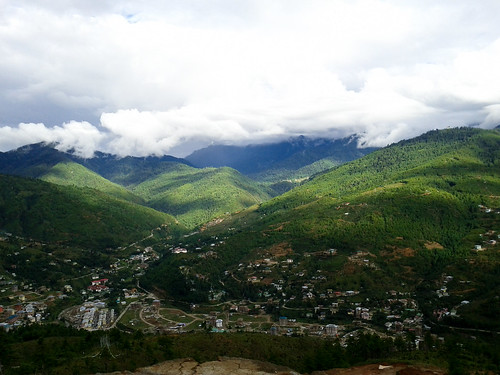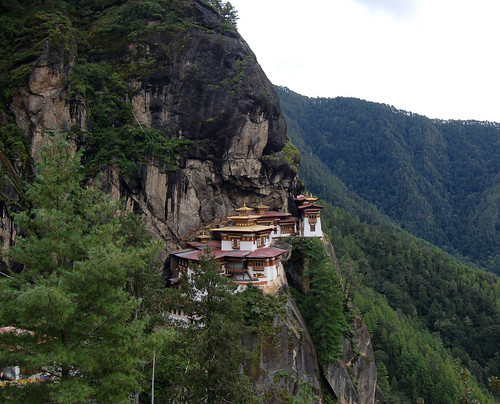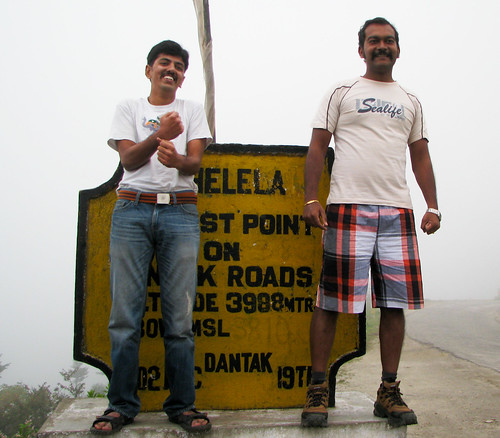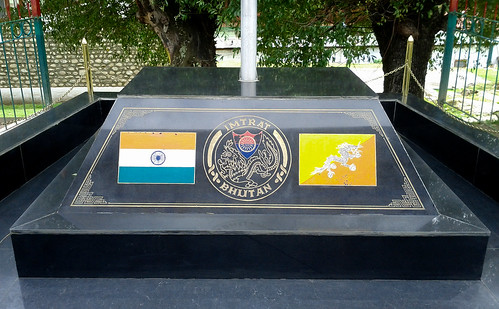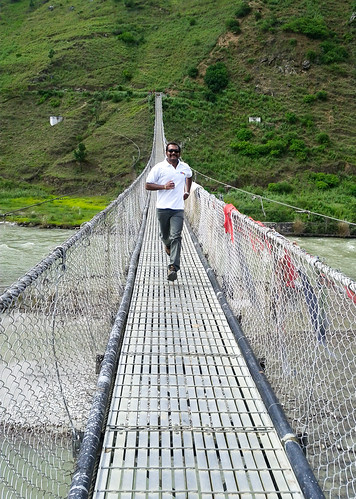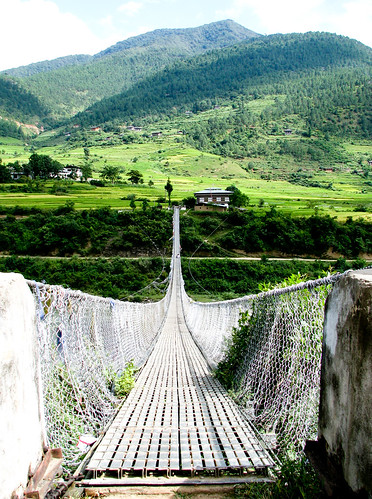The following are certain things that you have to keep in mind while traveling to Bhutan, which I came to know after my recent trip to Bhutan. I thought of writing about them here so that it is useful for others who are also planning for a trip there.
Getting into Bhutan
There are two ways to get inside Bhutan. One is to enter via Phuentsholing and the second option is to fly up till Paro and land there. To come out of Bhutan you can use the above two routes or come out through Samdrup as well. But you can’t enter through Samdrup.
Visa and Permit
For Indians you don’t need a get a visa in advance to enter Bhutan. You can get the permit on arrival, either at Phuentsholing or at Paro. You will initially get a permit for 7 days at Phuentsholing and using it you can visit only Thimphu and Paro. To stay more or visit other restricted places which I visited like Haa valley, Punakha or Bumthang, you need to renew your permit in Thimphu. The immigration office is located at Norzin Lam in Thimphu.
Timezone
Bhutan follows a different timezone than India. It is GMT + 6 hours, which is 30 minutes ahead of Indian standard time. Once you cross Phuentsholing all times which are displayed are in Bhutan timezone. We missed our bus to Thimphu from Phuentsholing because of this timezone difference.
No smoking
Bhutan has a very strict policy about smoking. Smoking or sale of tobacco products is completely prohibited inside Bhutan. The fine is pretty high and it also includes jail time if you are caught. So be aware of this rule.
Dress code
Bhutan has a strict dress code for its people but it is pretty relaxed for tourists. Bhutan nationals are supposed to wear their national dress (Gho for men and Kira for women) on all formal occasions and places like government office, temples, Dzongs, monasteries etc.
For tourists when you enter Dzongs you should wear full pants and shirts with collars or full sleeves. The easiest option is to always carry a jacket and just wear it when needed. Even though not needed if you happen to buy a Gho or Kira, then they will be very happy to help you wear it. But keep in mind that it is not that easy to wear and are generally quite expensive 🙂
If you are anywhere near their national flag, you should remove your caps or hats. Also remove your footwear when you enter a holy place or temple. Most of the time it is clearly specified whether you have to remove your footwear or not.
Language
The official language of Bhutan is Dzongkha but pretty much everyone can understand and speak Hindi and English. Almost all the taxi drivers and shop keepers can also speak English. So it shouldn’t be a problem.
However if you learn a couple of words in Dzongkha like Thank you (Kadriche) or Hello(Kuzuzangbo la) and speak to them, they are very happy.
Photography
Photographing People
Bhutan people are generally shy and if you want to take a photo, it is always good to ask them. In our experience mostly they said yes. Also it is a good manner to get their postal address and send a copy to them. But don’t ask for their address if you don’t plan to send it to them.
If you happen to see anyone from the royal family then you should not photograph them, even if they are in the public place.
Photographing Places
Most of the places including Dzong and monasteries are okay to be photographed expect places where the deity are kept. The good rule of thumb is that if you have to remove your shoes, then it is not okay to photograph. Also when in doubt just ask someone and they will let you know.
Driving
You can take your own vehicle from India inside Bhutan and drive it with your Indian license. But for that you have to take a permit at Phuentsholing. You would need all relevant documents for your vehicle like RC book, pollution certificate etc. To drive Bhutan registered vehicles you need either a Bhutan license or international vehicle and can’t drive them with your Indian driving license.
If you are going to drive your own vehicle then be mindful of the rules. Almost everyone drives below 50 Km/per hour and there is absolutely no horn. Also the entire country doesn’t have a single traffic signal and I guess that should pretty much explain it 😉
Taxi Tariff
Almost all the taxi tariff are fixed by the government and is generally considered a bad practice to bargain. We found it to be cheap if we hire the taxi for the entire day or still cheaper if you hire it for the entire trip. We hired a taxi for 8 days and paid 3000 Nu per day.
Most of the taxi’s are 4 seaters and if you are in a group of 5, then you have to hire two separate taxi’s and they follow this rule pretty religiously.
Food
Most of Bhutanese food is like Indian food, but they are very very spicy. They don’t add chilies to dishes but pretty much the entire dish is made out of chilies. You have to specify the spice level when you order Bhutanese food. You can try out some of these Bhutanese dishes, which we found to be very good. Ema Dhatse (chillies and cheese), Kewa Dhatse (potatoes and cheese) and Shawa Datse (mushroom and cheese). You also would get rice and dhal pretty much everywhere.
You can also try out kokka (a special type of noodles), channa and tea for breakfast which are also very good.
Trekking
Multi-day trekking is extremely expensive. The cost is around $150-$200 a day. It is because of very stringent rules regarding trekking and disposal of human wastes. There are lot of opportunities for half-day hikes which doesn’t require guides. You can also try out mountain biking and there are lot of beautiful trails available throughout the country. Mountain bikes are available for full day rent and the cost is around Nu 1000 per day.
Rivers and Lakes
Most of the water bodies (either rivers or lakes) are considered to be sacred places. Contaminating them or throwing stones or garbage into them is considered to be a serious offense, so be mindful of them. Fishing is also prohibited in most places.
Pedestrian Day
Every Tuesday is Pedestrian Day and no private vehicles are allowed on road and people are encouraged to walk or use bicycle. In small towns all taxi’s are allowed and in big cities like Thimphu and Paro, taxi’s are allowed based on their registration number. Taxi’s with odd and even registration numbers are allowed on alternate Tuesday’s.
Dry day
Every Tuesday is also a dry day and selling of alcohol is prohibited throughout the country.
Mobile and GPRS
It is very easy to get a local pre-paid GSM sim. You just need your permit and activation is instant. Calls to India are charged 5 Nu/per minute. There is no 3G and GPRS is very expensive. It costs around 10 NU/per MB and the connection is not that great. In Thimphu there are a couple of restaurants that provide free wifi. (The cafe and Ambient Cafe. Both are near the clock tower). In other places you can go to an Internet cafe and the cost is around 60-90 Nu per hour.
Update: Total cost
A couple people were asking me what was the total cost for the entire trip. I just did the accounts and it came to around Rs 17,500 per person for two weeks in a group of 5. If the number of people in the group is less then it might have be slightly high.
If you are planning to travel to Bhutan and if you have any specific question leave a comment below and I will try to update this post with the answer.
